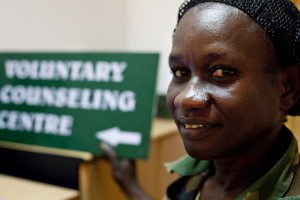Building a Health Workforce To Achieve an AIDS-Free Generation

By Mandy Folse, Director, Frontline Health Workers Coalition
At 2 p.m. Eastern today, the Senate Foreign Relations Committee takes up the nomination of Dr. Deborah Birx to be the next leader of one of the great successes in United States foreign assistance – the President’s Emergency Plan for AIDS Relief (PEPFAR). There will undoubtedly be discussion with Dr. Birx about her distinguished career fighting AIDS, PEPFAR’s accomplishments to date, and the work that remains to reach the goal of an AIDS-free generation.
While I am looking forward to this discussion, I will be focusing on a critical, yet hardly spoken of, hurdle to achieving this goal: a shortage of well-trained health workers where they are needed most, as well as a strategy to deploy, support and retain this workforce.
PEPFAR’s ongoing support of life-saving antiretroviral treatment for more than 6.7 million people living with HIV – and its support of HIV counseling and testing for 57.7 million people in fiscal year 2013 alone – is remarkable. However, while we frequently take time to appreciate how many lives have been changed by the program, we rarely focus on the frontline health workers responsible for testing and treating the millions of PEPFAR beneficiaries the U.S. so proudly supports.
If we are to harness the power of effective HIV prevention and treatment interventions, we must have the workers with the right training in the right places to deliver these services. Unfortunately, we have some work to do in that regard. The World Health Organization and others recently estimated that there is a global shortage of 7.2 million doctors, nurses and midwives to deliver essential health services like HIV/AIDS prevention, care and treatment—a gap that will keep growing if health workforce strengthening is not a central priority for all of our global health programs.
The bipartisan members of Congress who approved the last authorization of the PEPFAR program in 2008 recognized this issue. The 2008 Lantos-Hyde Act required PEPFAR to support the training and retention of at least 140,000 new health workers by the end of 2013. Last year, Congress moved swiftly and in a bipartisan fashion toward more robust oversight of PEPFAR, including a requirement to report how partner countries are addressing severe health workforce shortages.
I hope we hear from Dr. Birx about when we can expect to hear the results of the 140,000 health worker requirement and how partner countries are working to reduce their health workforce shortages.
Going forward, we also need more clarity from all the departments and agencies involved in U.S. global health programming – USAID, HHS, CDC and the State Department, among others – on America’s strategy and targets for our global investments as we work with partner countries to build a well-trained and supported health workforce on the frontlines of care.
As PEPFAR transitions from an emergency program to coordinated country-led responses, I look forward to hearing from Dr. Birx about PEPFAR’s plans to help countries build the health workforce we need to achieve an AIDS-free generation. Watch a live webcast of the hearing beginning at 2 p.m. Eastern.

